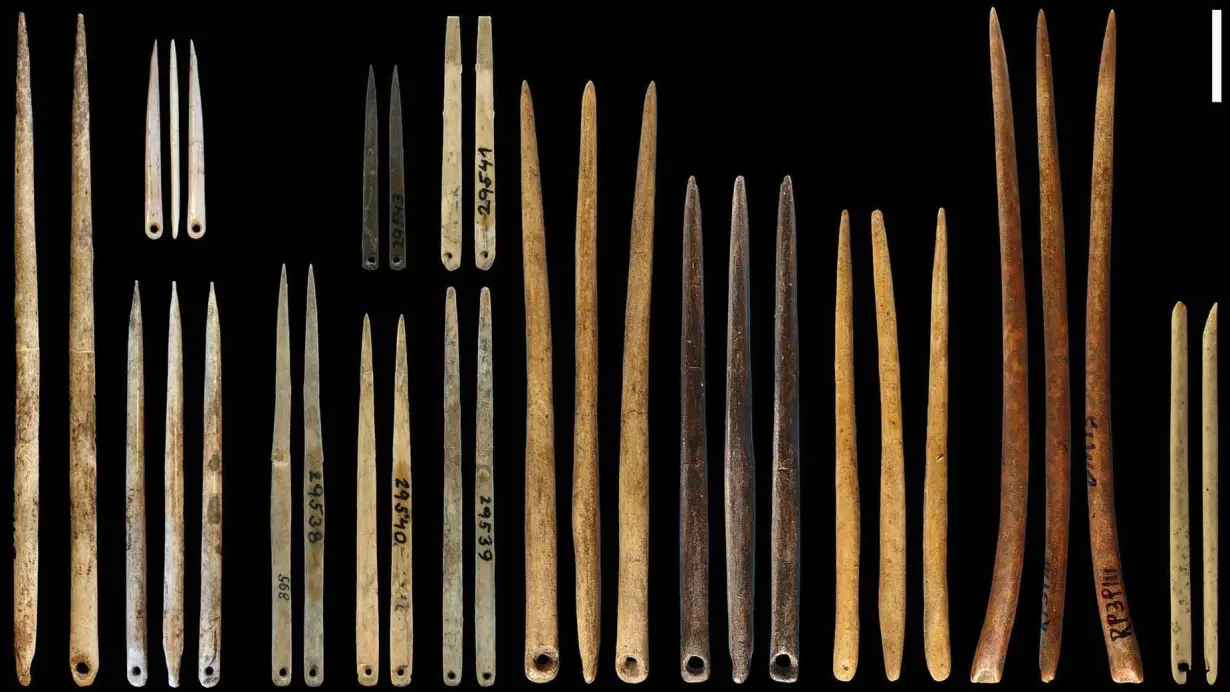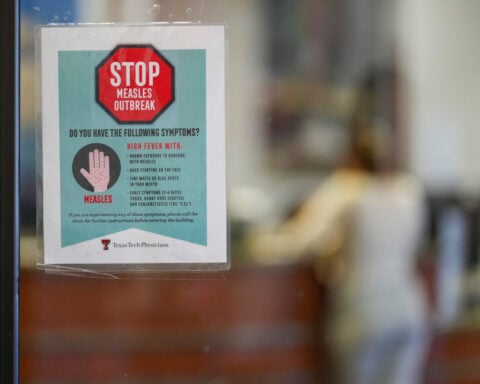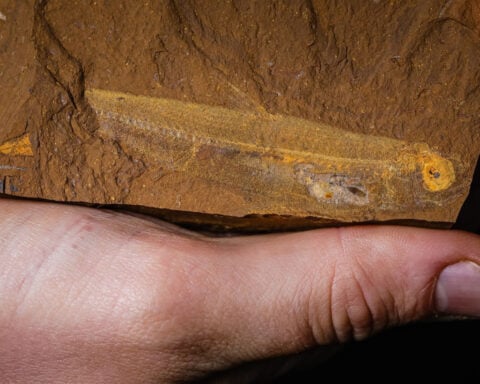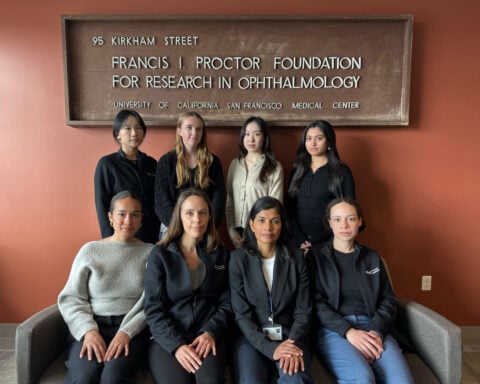(CNN) — The eyed needle — a sewing tool made of bones, antlers or ivory that first appeared around 40,000 years ago in southern Siberia — might be hiding important clues about the beginnings of fashion, a new study has found.
Researchers looked at existing archaeological evidence from dozens of sites across Europe, the Middle East, Southeast Asia, southern Africa and Australia, where ancient tools used to make clothes had been discovered, according to the research published June 28 in the journal Science Advances. The circumstances surrounding eyed needles raised a number of questions.
“Eyed needles made sewing more efficient and reflected the advent of fitted or tailored clothing,” said lead study author Ian Gilligan, honorary associate in the discipline of archaeology at the University of Sydney in Australia.
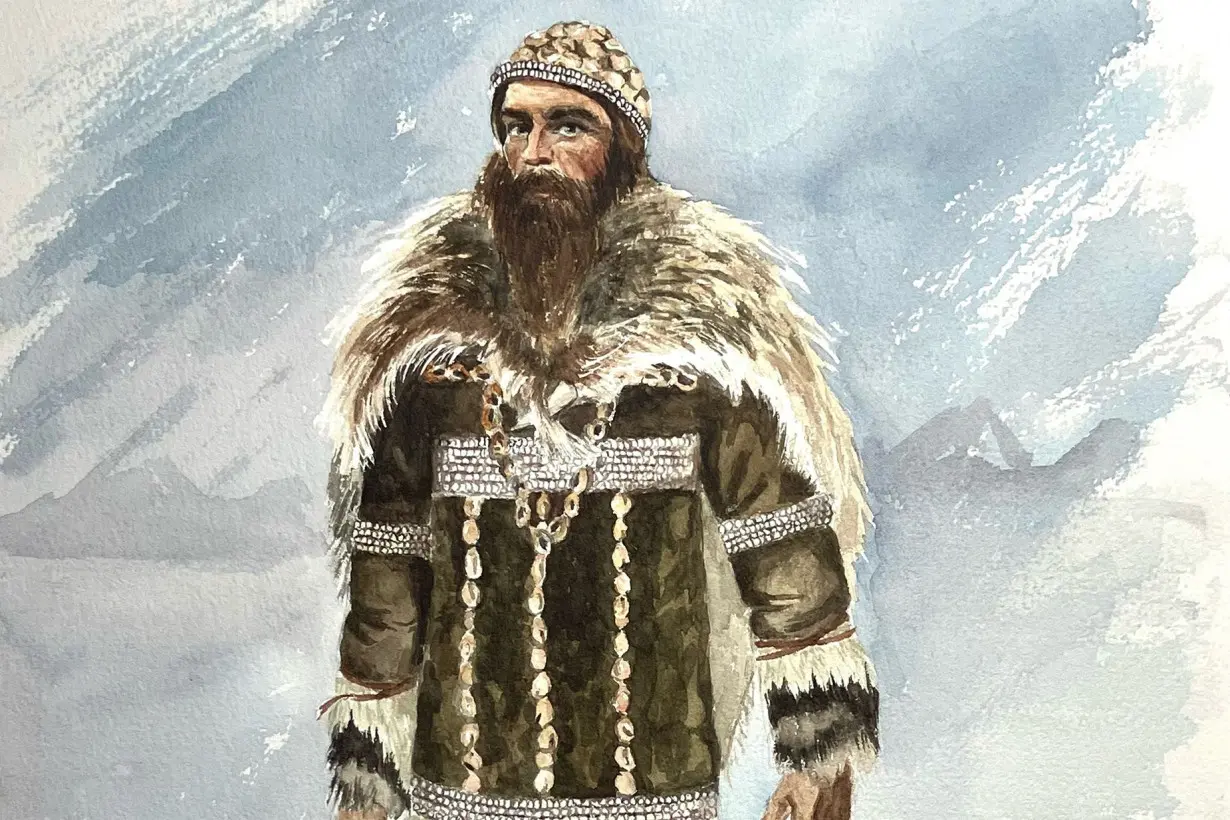
However, historical evidence exists for earlier tools that were used for making clothes, albeit with less precision. “So why did eyed needles start to appear in the colder parts of Eurasia as the climate was getting colder, from around 40,000 years ago and leading into the peak of the last glacial period, around 22,000 years ago?”
According to Gilligan, this enhanced precision might have served a purpose beyond tailoring for prehistoric humans: self-expression.
“During the colder parts of the last ice age, people needed to cover their bodies more or less continuously,” he said, adding that clothing would have nullified some traditional ways of decorating the body for social purposes seen in many hunter-gatherer societies, such as body painting, tattooing and scarification.
“Once people need to wear clothes all the time because of the cold, then how do you decorate yourself? How do you alter your appearance for social purposes? And the answer is that you shift the decoration from the surface of the skin onto the surface of the clothes,” Gilligan said.
According to this interpretation, eyed needles, one of the symbols of the Paleolithic age, were not simple tailoring tools but also instruments for the social and cultural development of prehistoric humans.
A marker of change
Eyed needles were not exclusively used for decorative purposes, the new study noted. They could also have been used to create more tight-fitting clothing or tailor layers such as underwear.
Archaeological discoveries have unearthed older tools for tailoring, such as bone awls — which are simply sharpened animal bones found to have been used for cutting animal hides.
“We don’t need to have eyed needles to manufacture clothing,” he said. “We now know that other technologies already existed before them, which raises the question of why eyed needles were invented.”
There is evidence for the decoration of clothing during the last glacial cycle, Gilligan added, citing the discovery of a burial site near Moscow where skeletons believed to be 30,000 years old were adorned with thousands of pierced ivory beads and shells. “In all likelihood, they were sewn onto the outer surface of clothing for decoration,” he said.
This evidence would support the theory that eyed needles played a role in decoration, without ruling out their use for tailoring. “Those two purposes, they’re not mutually exclusive at all. And in fact, they go together,” Gilligan said. “Once you’re covering a body more completely, then you need to transfer decoration onto the clothing, and eyed needles would be useful for both.”
It’s likely that the hypothesis will never find a material confirmation, because the oldest clothes ever found are about 5,000 years old — textile materials and leather can’t be preserved for much longer. However, the practice would suggest a much earlier cultural and social use of garments than previously believed.
“Clothing didn’t acquire its social purpose until towards the end of the last glacial cycle — that’s why we think clothing, for the first time, has continued to be used by humans when it wasn’t needed for thermal insulation, around 12,000 years ago,” Gilligan said.
“Our study shows that eyed needles are a marker for this change in the function of clothing, from thermal to social necessity,” he added.
Connecting to the past
This study is important not only because it reinforces the significance of clothing and dress in understanding the development of human cultures, but also because it brings differing perspectives in art and science closer together, said Liza Foley, an assistant professor at Ghent University and a curator of fashion and textiles at the Royal Museums of Art and History in Brussels, Belgium. Foley was not involved with the research.
April Nowell, a professor and Distinguished Lansdowne Fellow at the department of anthropology of the University of Victoria in Canada, said it can sometimes be difficult for scientists to help people connect to such a remote past as the Paleolithic, and archaeologists have the added challenge of having to make the most of every artifact they find.
“Objects like clothing do not preserve over thousands of years, but bone and mammoth ivory needles do, and they can tell us about our ancestors’ technological knowledge and the ways they adapted to both their physical and cultural environments,” said Nowell, who was also not involved with the study.
It’s these kinds of objects we can all relate to that help to humanize the past, she added.
“Other than material, the eyed needle really hasn’t changed in any practical sense for millennia,” she said via email.
There is evidence for loom-woven and even dyed textiles beginning roughly 30,000 years ago, she concluded. As a result, scientists can infer the kinds of decision-making people would have to go through to make a spun, dyed garment — which plants to use, the manner of spinning, how to decorate the item of clothing and ultimately how to protect it from the elements when living outside most of the time.
“And all of this knowledge would be passed from generation to generation,” Nowell said, “so something as simple and seemingly insignificant as a needle opens up a window onto the unexpected richness of the lives of Ice Age peoples.”
The-CNN-Wire
™ & © 2024 Cable News Network, Inc., a Warner Bros. Discovery Company. All rights reserved.

 Trump has begun another trade war. Here's a timeline of how we got here
Trump has begun another trade war. Here's a timeline of how we got here
 Canada's leader laments lost friendship with US in town that sheltered stranded Americans after 9/11
Canada's leader laments lost friendship with US in town that sheltered stranded Americans after 9/11
 Chinese EV giant BYD's fourth-quarter profit leaps 73%
Chinese EV giant BYD's fourth-quarter profit leaps 73%
 You're an American in another land? Prepare to talk about the why and how of Trump 2.0
You're an American in another land? Prepare to talk about the why and how of Trump 2.0
 Chalk talk: Star power, top teams and No. 5 seeds headline the women's March Madness Sweet 16
Chalk talk: Star power, top teams and No. 5 seeds headline the women's March Madness Sweet 16
 Purdue returns to Sweet 16 with 76-62 win over McNeese in March Madness
Purdue returns to Sweet 16 with 76-62 win over McNeese in March Madness
